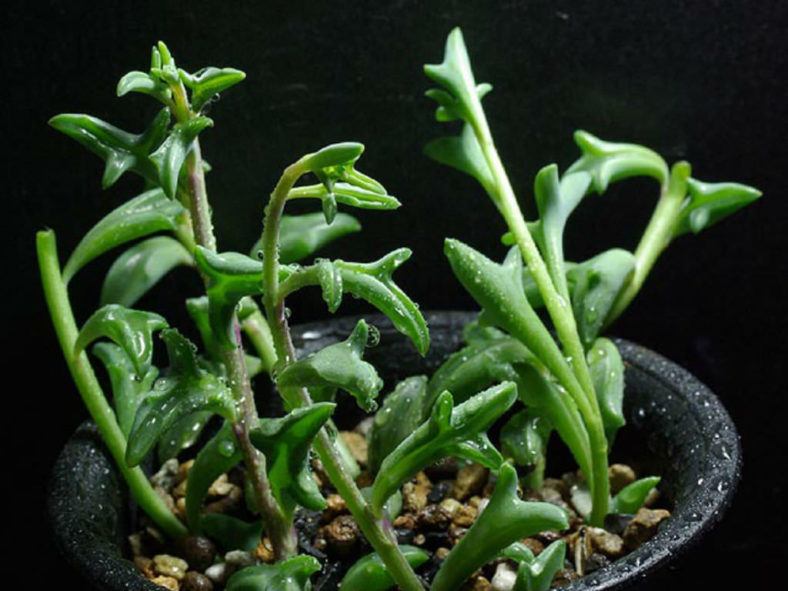Scientific Name
Senecio 'Hippogriff'
Common Name(s)
Dolphin Necklace, Dolphin Plant, Flying Dolphins, String of Dolphins
Synonym(s)
Curio × peregrinus, Kleinia peregrina, Senecio × peregrinus
This plant is often incorrectly called Curio peregrinus, Senecio peregrinus, or Dendrophorbium peregrinum
Scientific Classification
Family: Asteraceae
Subfamily: Asteroideae
Tribe: Senecioneae
Subtribe: Senecioninae
Genus: Senecio
Description
Senecio 'Hippogriff', also known as Curio × peregrinus or Senecio × peregrinus, is a beautiful succulent plant with leaves that look like tiny dolphins jumping out of the waves. It grows up to 6 inches (15 cm) tall. As the leaves grow, they become more and more similar, perfecting themselves as an impressive potted plant.
The small white flowers form tightly compacted puffballs with a halo of deep red to golden yellow filaments. They appear in the fall.
Origin
Gordon Rowley believed this plant was a hybrid of Curio articulatus (formerly known as Senecio articulatus) and Curio rowleyanus (formerly known as Senecio rowleyanus).

Hardiness
USDA hardiness zone 9b to 11b: from 25 °F (−3.9 °C) to 50 °F (+10 °C).
How to Grow and Care
These plants tolerate dry periods but must be kept moist enough to prevent the dolphin leaves from puckering. Choose a well-draining potting medium and use a container that is just a bit larger than the plant. Dolphin Plants thrive in slightly crowded conditions.
Dolphin Plants may just be another novelty plant, but they are also selective about some of their care. Their cultivation requirements are similar to their parent plants. Provide them with bright but indirect light.
The optimum average temperatures are 72 °F (22 °C) during the growing season. However, the plant will go dormant in winter and requires slightly cooler temps, around 50 to 55 °F (10 to 13 °C).
Allow soil to dry out between watering. On average, plants need to be watered once weekly in the growing season but only once monthly in the dormant period.
See more at How To Grow and Care for a Dolphin Necklace (Senecio peregrinus).
Links
- Back to genus Senecio
- Succupedia: Browse succulents by Scientific Name, Common Name, Genus, Family, USDA Hardiness Zone, Origin, or cacti by Genus
Photo Gallery
Click on a photo to see a larger version.



